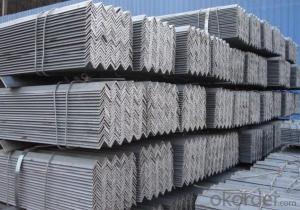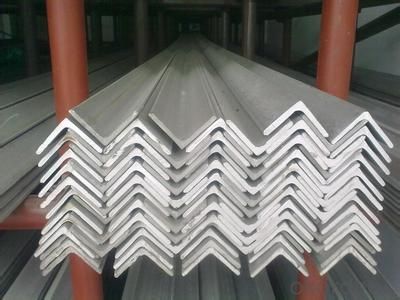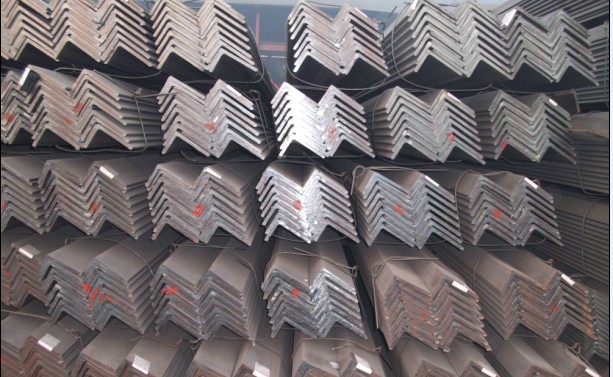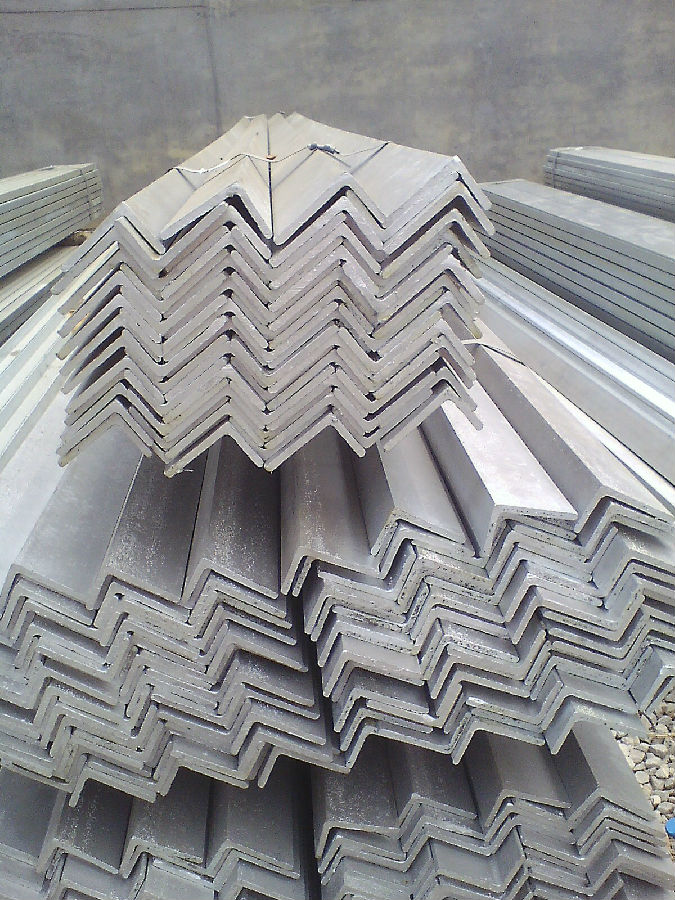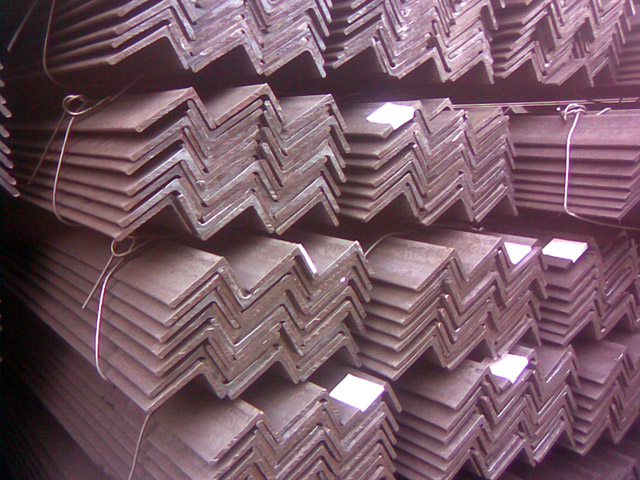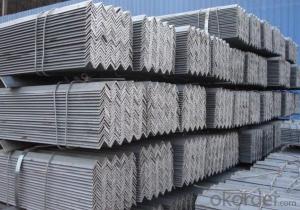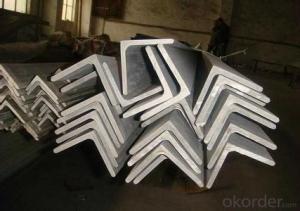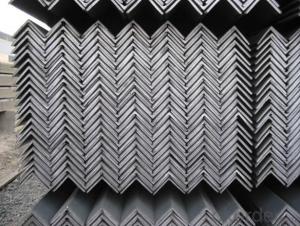High quality angle steel 20-250mm hot rolled GB Q235
- Loading Port:
- Qingdao
- Payment Terms:
- TT OR LC
- Min Order Qty:
- 25 m.t.
- Supply Capability:
- 100000000 m.t./month
OKorder Service Pledge
OKorder Financial Service
You Might Also Like
Product Description:Specificationsangle steel angle steel angle steel agle steel angle steel
Angle called angle, the steel strip is perpendicular to each other on both sides into angular.Divided into equilateral angle steel and ranging from side angle. Two equilateral angle steel edge width is the same. The specification is expressed by edge width * width * thick edgenumber of millimeters. Such as "/ 30 x 30 x 3", namely that equilateral angle steel edge widthof 30 mm, 3 mm thick edge. Can also be used to model representation, model is the wideangle 3# cm, such as. The model does not represent the same type in different edge thickness size, thus in the contract and other documents on the angle of the edge width, edgethick size fill in complete, avoid alone represented by type. Hot rolled equilateral angle steelspecifications for 2#-20#. Angle according to the different needs of structure composed of a variety of stress components, can also be used as a component of the connections between the. Widely used in a variety of architectural and engineering structures, such as beams,bridges, towers, hoisting and conveying machinery, ships, industrial furnace, reactor,container frame and warehouse. Mainly divided into equilateral angle steel, equilateral angle steel two categories, includingunequal angle can be divided into equal thickness and unequal thickness ranging from two. Angle specifications with the side length of the size and edge thickness. At present, the domestic steel specifications for 2 - 20 cm in length, number of numbers, the same horn steel often have 2 - 7 different edge thickness. The actual size and inlet angle marked on both sides of the thickness and indicate the relevant standards. The general length of more than 12.5cm for large angle steel, 12.5cm - 5cm for the medium angle, length of 5cm for smallangle. Inlet and outlet angle steel orders generally required the use specifications in the steel,carbon structural steel grades as appropriate. Is the angle in addition to standard number, nospecific composition and performance series. Angle steel delivery length is divided into fixed length, size two, domestic steel length range is3 - 9m, 4 12M, 4 19m, 6 19m four range according to different specifications. Japanese steellength ranges from 6 to 15m. Section of unequal angle height according to the long edge of the width to calculate the non equilateral angle steel. Refer to section angle and side length is not equal to the steel. Is a kind of angle steel. The length from 25mm * 16mm to 200mm * l25mm. By the hot rolling mill rolling in. General scalene angle steel specifications: thickness of 4-18mm / 50*32-- / 200*125 Equilateral angle steel is widely used in all kinds of metal structures, bridges, machinery manufacturing and shipbuilding industry, all kinds of architectural and engineering structures,such as beams, bridges, towers, hoisting and conveying machinery, ships, industrial furnace,reactor, container frame and warehouse etc. 1.Transportation: the goods are delivered by truck from mill to loading port, the maximum quantity can be loaded is around 40MTs by each truck. If the order quantity cannot reach the full truck loaded, the transportation cost per ton will be little higher than full load. 2.With bundles and load in 20 feet/40 feet container, or by bulk cargo, also we could do as customer's request. 3. Marks: Color mark: There will be color marking on both end of the bundle for the cargo delivered by bulk vessel. That makes it easily to distinguish at the destination port. Tag mark: There will be tag mark tied up on the bundles. The information usually including supplier logo and name, product name, made in China, shipping marks and other information request by the customer. If loading by container the marking is not needed, but we will prepare it as customer request. |
- Q: How do steel angles contribute to the overall durability of a structure?
- Steel angles contribute to the overall durability of a structure by providing structural support and reinforcement. They are commonly used in construction to add strength and stability to various components of a building, such as beams, columns, and frames. The L-shaped design of steel angles allows them to effectively distribute and transfer loads, reducing the risk of deformation, collapse, or failure. Additionally, their high tensile strength and resistance to bending and twisting make them ideal for withstanding heavy loads, seismic forces, and adverse environmental conditions, thus enhancing the durability and longevity of the structure.
- Q: What are the different methods of fire protection for steel angles?
- Depending on specific requirements and regulations, there exist several methods for fire protection of steel angles. Some commonly used methods include: 1. Passive Fire Protection: Fire-resistant materials, such as fire-resistant coatings, fireproofing sprays, or intumescent paints, are directly applied to the steel angles. These coatings serve to delay fire spread and provide insulation, safeguarding the steel angles from high temperatures during a fire. 2. Encasement: Steel angles can be enclosed in fire-resistant materials like concrete or gypsum board. This creates a barrier that prevents the fire from reaching temperatures that could result in structural failure. 3. Fireproofing Systems: Fire-resistant boards or panels are affixed to the steel angles, forming fireproofing systems. These systems offer insulation and protection against fire, slowing down the heating process and maintaining the structural integrity of the steel angles for an extended period. 4. Sprinkler Systems: The installation of sprinkler systems is also an effective fire protection measure for steel angles. These systems are designed to detect and suppress fires by releasing water or fire-suppressing agents upon activation. By swiftly extinguishing the fire, sprinklers can prevent the steel angles from reaching critical temperatures. 5. Fire-resistant barriers: Fire-resistant walls or curtains can be employed as barriers to separate steel angles from potential fire sources. These barriers aid in containing the fire and preventing its spread to the steel angles, providing an additional layer of protection. To determine the most suitable method of fire protection for steel angles in a specific setting, it is crucial to consult fire protection experts, engineers, and local building codes. Factors such as building type, fire safety requirements, and the level of fire risk involved may influence the choice of method.
- Q: I would like to ask you, angle iron, what does it usually use ah?
- Electrical installation is often used with 40 x 4 angle angle and angle of 50 * 5 / two, 40 * 4 steel commonly used in porcelain wiring and lighting piping, use 50 x 5 angle angle is more extensive, such as cable bracket, power piping, busbar support installation, can replace the cable bridge frame the arm. Usually the iron angle, anti rust paint and gray paint brush.
- Q: What are the different types of connections used for steel angles in architectural applications?
- There are several types of connections used for steel angles in architectural applications. Some common types include bolted connections, welded connections, and riveted connections. Bolted connections involve using bolts to secure the steel angles together, while welded connections involve fusing the steel angles using heat. Riveted connections, on the other hand, involve using rivets to connect the steel angles together. Each type of connection has its own advantages and disadvantages, and the choice depends on factors such as the load requirements, aesthetics, and ease of construction.
- Q: Can steel angles be used for framing partitions and walls?
- Yes, steel angles can be used for framing partitions and walls. Steel angles are commonly used in construction for their strength and durability. They can be used to create a framework for partitions and walls by providing structural support and stability. Steel angles are versatile and can be easily cut and welded to fit the desired dimensions and angles. They are also resistant to fire, pests, and moisture, making them a suitable choice for framing interior walls and partitions in both commercial and residential buildings.
- Q: What are the standard sizes for steel angles?
- The standard sizes for steel angles vary depending on the manufacturer and the specific requirements of the project. However, some commonly available sizes for steel angles include 1/2 inch, 3/4 inch, 1 inch, 1-1/4 inch, 1-1/2 inch, and 2 inches. These sizes refer to the measurement of the sides of the angle.
- Q: Can steel angles be used in modular building systems?
- Indeed, modular building systems can utilize steel angles. Due to their strength and versatility, steel angles are frequently employed in construction. These angles contribute structural support and stability to the building system. In the realm of modular construction, steel angles serve as framing members, connectors, or reinforcements, depending on the specific design requirements. They can effortlessly be attached and integrated into the modular system, enabling efficient and cost-effective construction. Furthermore, steel angles possess durability and resistance to diverse environmental factors, rendering them suitable for modular buildings that must endure various conditions. All in all, steel angles constitute a dependable and pragmatic option for modular building systems.
- Q: Are steel angles suitable for agricultural applications?
- Yes, steel angles are suitable for agricultural applications. Steel angles are versatile and durable, making them ideal for various agricultural purposes. They can be used for constructing sturdy frames for greenhouses, barns, and storage buildings. Steel angles provide excellent structural support and can withstand heavy loads, making them suitable for building sturdy fences, gates, and livestock enclosures. Additionally, steel angles are resistant to corrosion, which is crucial in agricultural environments where exposure to moisture and chemicals is common. The versatility and durability of steel angles make them a reliable choice for agricultural applications.
- Q: Can steel angles be used in shelving systems?
- Indeed, shelving systems can incorporate steel angles. It is quite common to utilize steel angles in shelving systems due to their ability to offer structural reinforcement and ensure stability. They can function as brackets or frames that securely hold the shelves in position. Steel angles are recognized for their robustness and resilience, rendering them ideal for shelving applications that involve heavy-duty purposes. Moreover, they are accessible in diverse dimensions and gauges, enabling flexibility and adaptability in shelving design. In general, steel angles are highly favored in shelving systems owing to their strength, stability, and capacity to endure substantial loads.
- Q: Are steel angles resistant to earthquakes?
- Steel angles can provide some level of resistance to earthquakes. Steel is known for its high strength and ductility, making it a suitable material for seismic-resistant construction. Steel angles, also known as steel L-shaped beams, are often used in structural applications to provide support and reinforcement. During an earthquake, steel angles can help distribute the seismic forces evenly throughout the structure, thereby reducing concentrated stress points. The L-shape design of steel angles enables them to resist bending and twisting forces, which are common during seismic events. Additionally, steel angles can be interconnected and welded together to form a rigid frame system, enhancing their seismic resistance. This system can absorb and dissipate energy from earthquake-induced vibrations, minimizing damage to the structure. However, it is important to note that the overall seismic resistance of a structure depends on various factors, such as the design, construction methods, and adherence to building codes and regulations. Steel angles alone cannot guarantee complete protection against earthquakes, but when properly integrated into a well-designed seismic-resistant system, they can significantly enhance the structure's ability to withstand seismic forces.
Send your message to us
High quality angle steel 20-250mm hot rolled GB Q235
- Loading Port:
- Qingdao
- Payment Terms:
- TT OR LC
- Min Order Qty:
- 25 m.t.
- Supply Capability:
- 100000000 m.t./month
OKorder Service Pledge
OKorder Financial Service
Similar products
Hot products
Hot Searches
Related keywords
